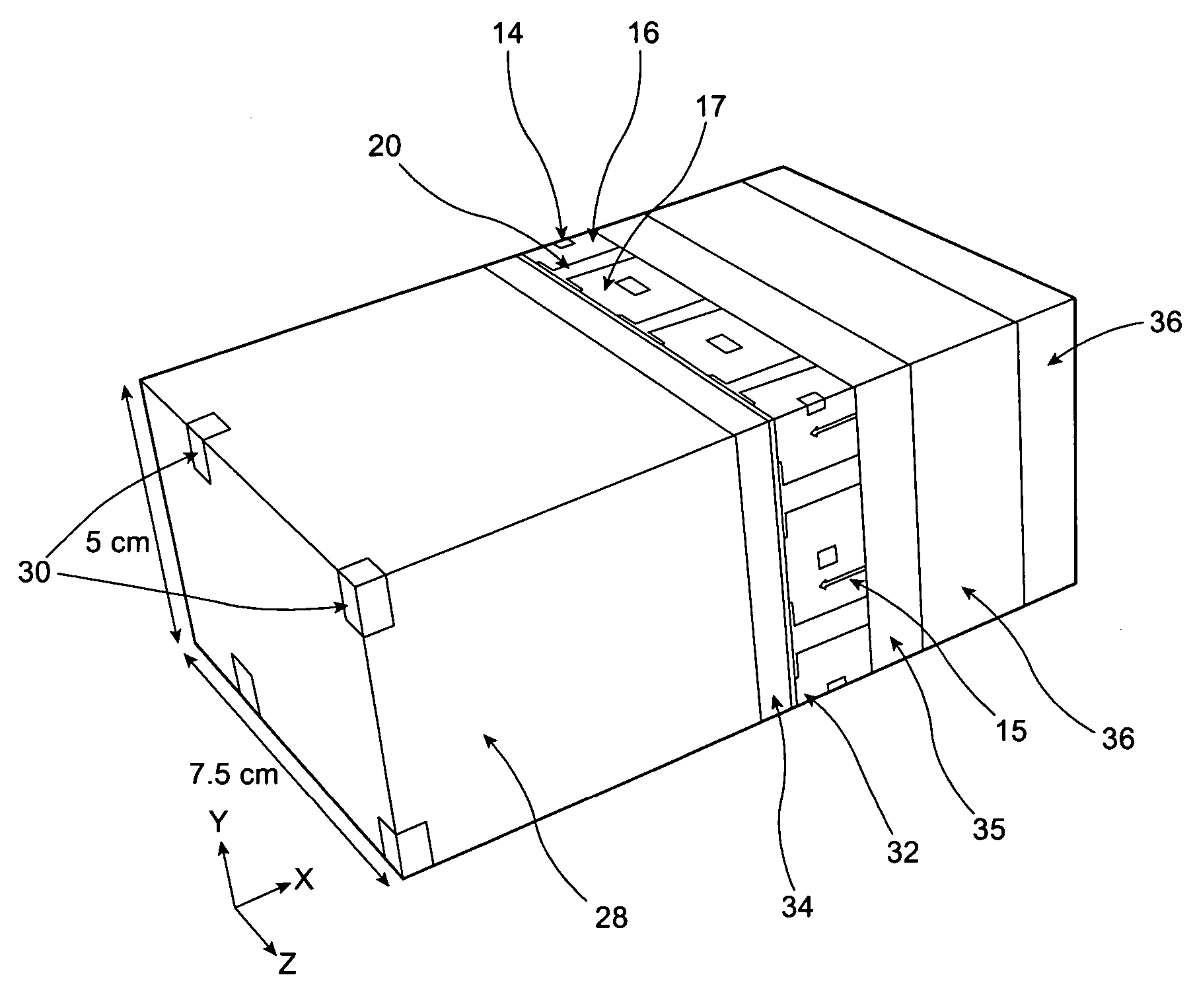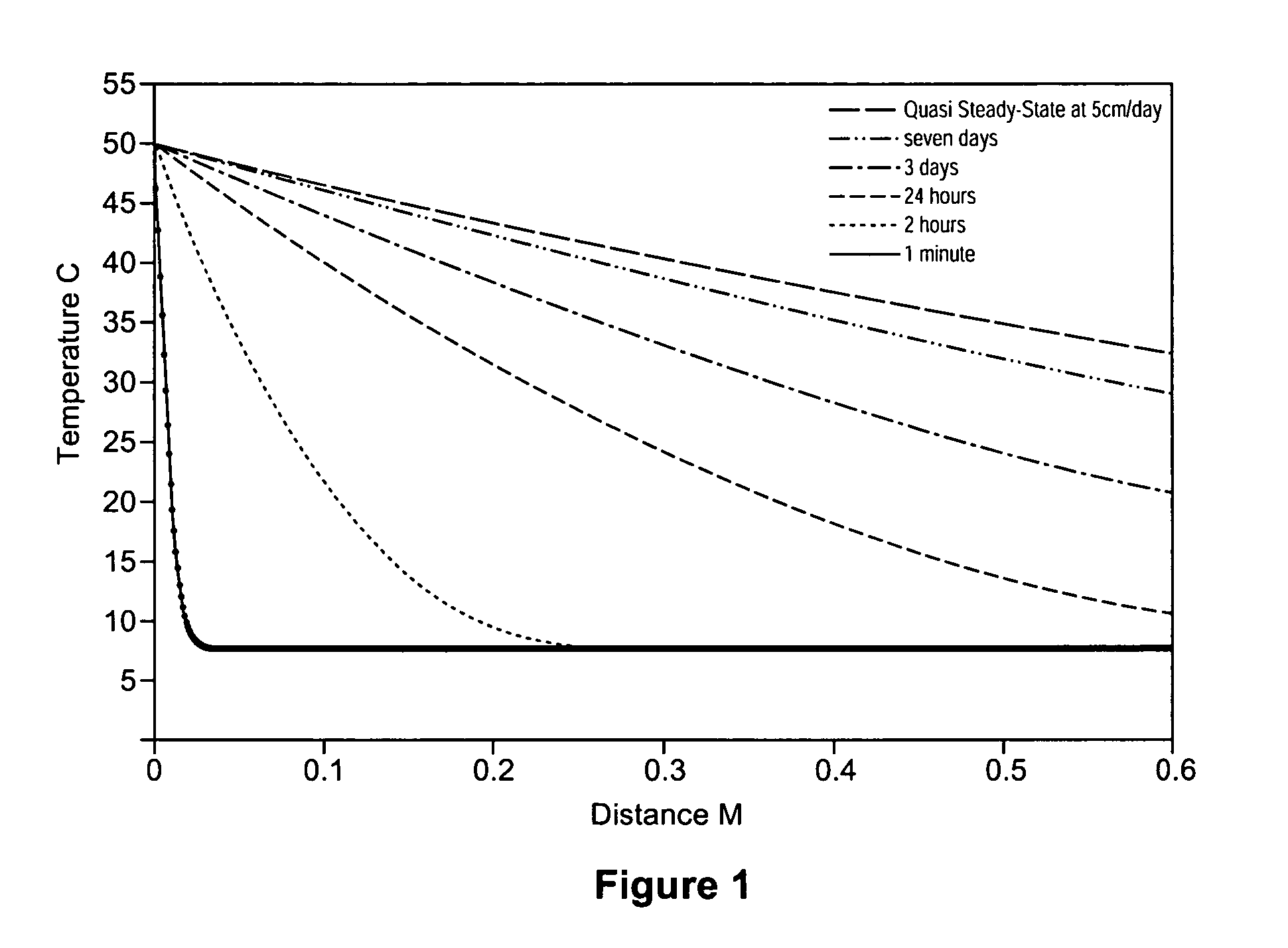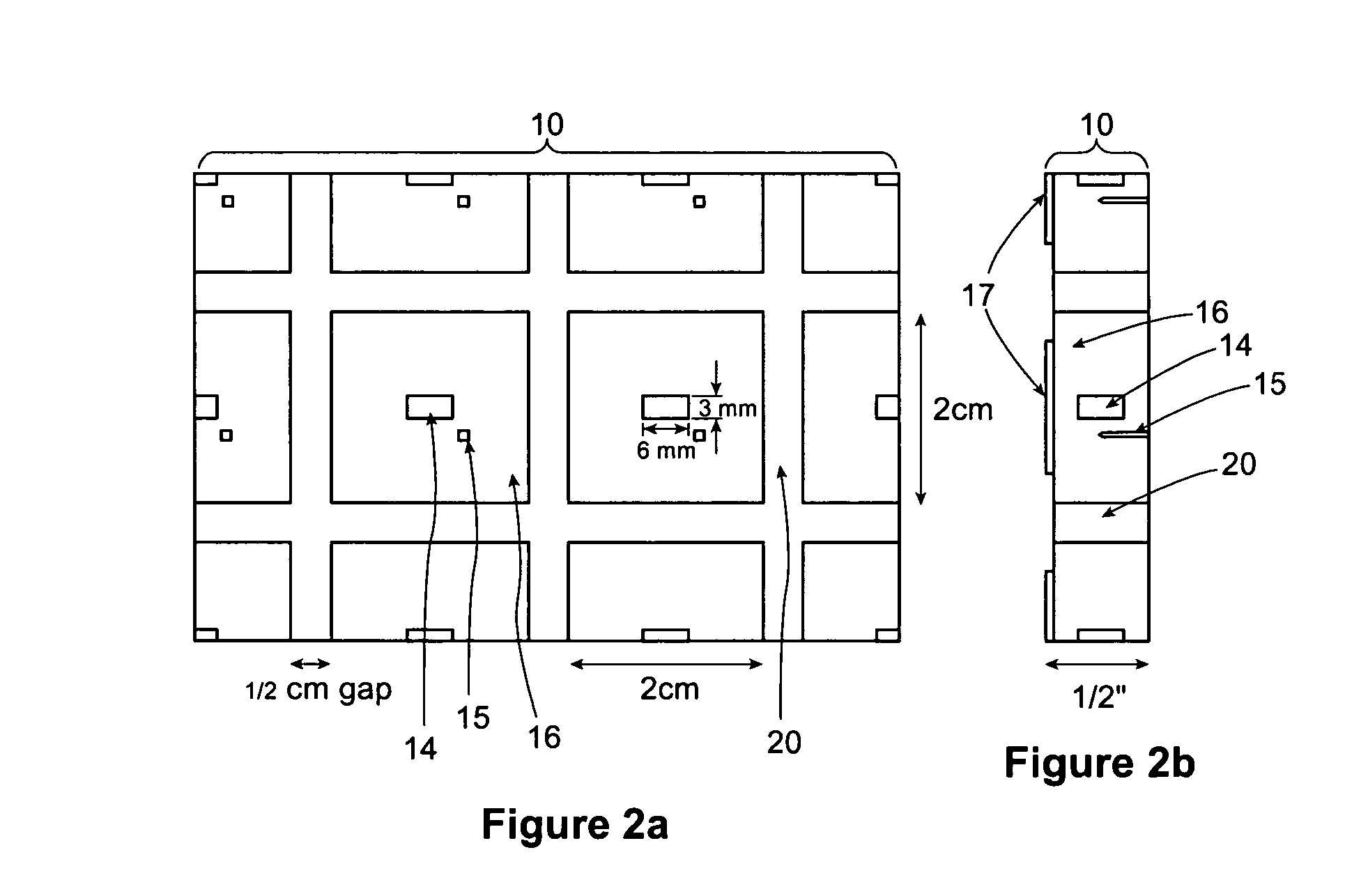Method and apparatus for testing heavy oil production processes
a technology of heavy oil and production process, applied in the direction of testing food, material heat development, instruments, etc., can solve the problems of difficult extraction commercially, difficult steam extraction, and difficult insitu separation of heavy oil from sand
- Summary
- Abstract
- Description
- Claims
- Application Information
AI Technical Summary
Benefits of technology
Problems solved by technology
Method used
Image
Examples
Embodiment Construction
[0042]FIG. 1 is calculated from the prior art as described in the background and illustrates the problems that the present invention seeks to address. FIG. 1 shows transient (one dimensional) temperature profiles at different times for a section of tar sand initially at 8 C when one edge is suddenly heated to 50 C, for example by a condensing solvent process. FIG. 1 also shows a “quasi-steady state” temperature profile for a bitumen extraction process taking place in 8 C tar sand with the interface heated to 50 C and an extraction rate of 5 cm / day. A physical model experiment must reproduce the appropriate “quasi-steady state” temperature profile, to accurately model insitu processes and thus to generate meaningful process test data. It will be understood by those skilled in the art that FIG. 1 only shows one-dimensional temperature profiles rather than the full 2D temperature map for the sake of clarity.
[0043]At “quasi-steady state” the sample has attained a temperature profile tha...
PUM
| Property | Measurement | Unit |
|---|---|---|
| velocity | aaaaa | aaaaa |
| power | aaaaa | aaaaa |
| dwell time | aaaaa | aaaaa |
Abstract
Description
Claims
Application Information
 Login to View More
Login to View More - R&D
- Intellectual Property
- Life Sciences
- Materials
- Tech Scout
- Unparalleled Data Quality
- Higher Quality Content
- 60% Fewer Hallucinations
Browse by: Latest US Patents, China's latest patents, Technical Efficacy Thesaurus, Application Domain, Technology Topic, Popular Technical Reports.
© 2025 PatSnap. All rights reserved.Legal|Privacy policy|Modern Slavery Act Transparency Statement|Sitemap|About US| Contact US: help@patsnap.com



